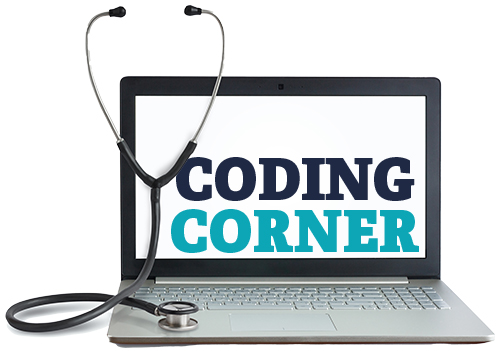 A 62-year-old man is admitted to the hospital with an exacerbation of chronic obstructive pulmonary disease (COPD) requiring intensification of his inhaler regimen, initiation of IV corticosteroids, and initiation of oxygen support with bilevel-positive airway pressure. He does not require oxygen at baseline and has a history of chronic back pain for which he takes twice daily naproxen. By day three he has steadily improved oxygen demands and is successfully weaned to 3 L/min by nasal cannula. However, the nurse calls to report melena. Morning laboratories reveal a drop in hemoglobin from 11 mg/dL to 9 mg/dL. His vital signs remain within normal limits on three liters of oxygen. On examination, there are bilateral wheezes consistent with decompensated COPD. You confirm that his stool is indeed consistent with melena and call gastroenterology. The gastroenterology team asks if you think the patient’s respiratory status is stable enough to undergo esophagogastroduodenoscopy (EGD). You tell them that, in your opinion, his respiratory status has significantly improved and his COPD is controlled enough that you think the risks of ongoing hemorrhage outweigh any increased respiratory risk from EGD in the setting of his COPD exacerbation.
A 62-year-old man is admitted to the hospital with an exacerbation of chronic obstructive pulmonary disease (COPD) requiring intensification of his inhaler regimen, initiation of IV corticosteroids, and initiation of oxygen support with bilevel-positive airway pressure. He does not require oxygen at baseline and has a history of chronic back pain for which he takes twice daily naproxen. By day three he has steadily improved oxygen demands and is successfully weaned to 3 L/min by nasal cannula. However, the nurse calls to report melena. Morning laboratories reveal a drop in hemoglobin from 11 mg/dL to 9 mg/dL. His vital signs remain within normal limits on three liters of oxygen. On examination, there are bilateral wheezes consistent with decompensated COPD. You confirm that his stool is indeed consistent with melena and call gastroenterology. The gastroenterology team asks if you think the patient’s respiratory status is stable enough to undergo esophagogastroduodenoscopy (EGD). You tell them that, in your opinion, his respiratory status has significantly improved and his COPD is controlled enough that you think the risks of ongoing hemorrhage outweigh any increased respiratory risk from EGD in the setting of his COPD exacerbation.
What level of billing does this qualify for?
This would qualify for level 3 (99233). This patient has evidence of upper gastrointestinal bleeding, an acute, life-threatening condition. He also has ongoing organ failure (respiratory failure requiring oxygen) associated with a chronic underlying condition (COPD) which is sufficient to justify an ongoing, severe exacerbation of a chronic disease. Either of these would meet the criteria for high-complexity problems. Because you are helping to weigh risks and optimization for a procedure, you can additionally claim credit under the “high risk of morbidity from additional diagnostic testing or treatment” category. An EGD could potentially carry a high risk of morbidity from respiratory decompensation (worsening COPD, aspiration, etc.) which may require escalation in respiratory support. Documentation of your risk-benefit analysis would help support high-level billing.
Tip
Patients with an acutely decompensated chronic medical condition or acute threat to life will often meet the criteria for level 3 billing (99223) if you are helping to determine the need for, or specifically ordering, additional testing or treatment with a high risk of morbidity. Examples of this could include procedures such as EGD or bronchoscopy (usually in the setting of respiratory failure or increased risk of respiratory failure), heart catheterization, and any urgent or emergent major surgery. Less invasive testing can also be considered to meet this criterion, such as ordering CT imaging with contrast in the setting of acute kidney injury or treatment, or starting anticoagulation in a patient at high risk of bleeding (e.g., in the setting of an acute deep vein thrombosis). Documentation of the increased risk of morbidity associated with the treatment or test and a benefit-risk analysis will help support your billing and medical decision making in these situations. n
Dr. Gentile is an internal medicine hospitalist, section chief for acute care medicine, and associate program director for internal medicine at Corewell Health Western Michigan, and assistant professor in the department of medicine at Michigan State University College of Human Medicine, all in Grand Rapids, Mich.